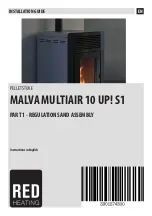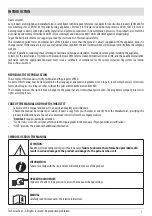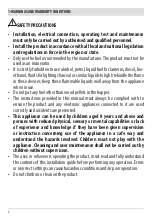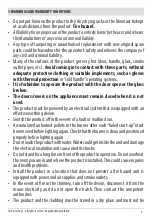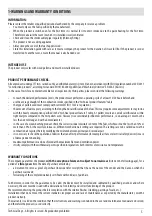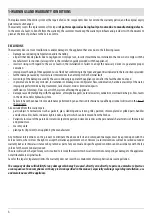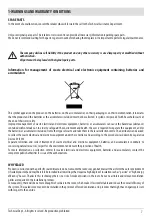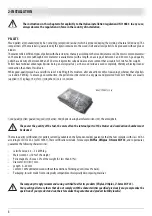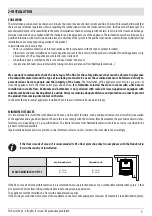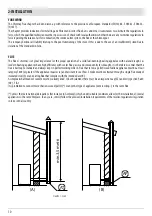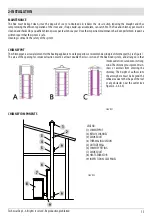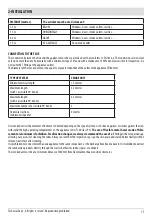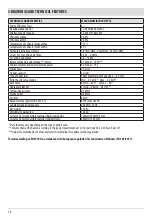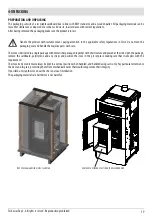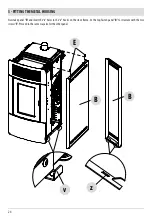
min.3,5 metr
i
AT
(A)
AP
(B)
10
2-INSTALLATION
FOREWORD
The Chimney Flue chapter has been drawn up with reference to the provisions of European Standards (EN13384 - EN1443 - EN1856 -
EN1457).
The chapter provides indications for installing an efficient and correct flue but is under no circumstances to substitute the regulations in
force, which the qualified technician must be in possession of. Check with local authorities whether there are any restrictive regulations in
force regarding the intake of air for combustion, the smoke outlet system, the flue or the chimneypot.
The company declines all liability relating to the poor functioning of the stove if this is due to the use of an insufficiently sized flue in
violation of the Standards in force.
FLUE
The flue or chimney is of great importance for the proper operation of a solid fuel-burning heating appliance with natural draught, as
modern heating appliances have high efficiency with cooler flue gasses and consequently less draught, it is therefore essential that the
flue is built up to standard and always kept in perfect working order. A flue that serves a pellet/wood fuelled appliance must be at least
category T400 (or greater if the appliance requires so) and resistant to soot fires. Smoke must be extracted through a single flue made of
insulated steel (A) or an existing flue that complies with the intended use (B).
A simple air shaft made of cement must be suitably lined. In both solutions there must be an inspection cap (AT) and/or inspection hatch
(AP) - FIG.1.
It is prohibited to connect more than one wood/pellet (*) or any other type of appliance (vent cowling...) to the same flue.
(*) unless there are national derogations (for instance in Germany), which under suitable conditions allow for the installation of several
appliances in the same fireplace. In any case, strictly follow the product/installation requirements of the relative regulations/legislation
in force in that country
FIGURE 1 - FLUE

